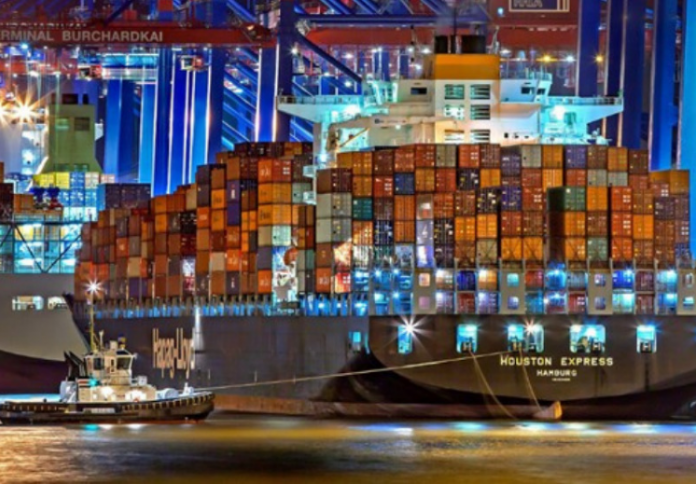Supply chain constraints and the consequent increase in solar cell and module prices could continue to plague the solar industry in India for the next three to four quarters.
At a session “The Black Swan: Supply Chain and How to Mitigate Market Surprises” on Day Two of the Mercom India Solar Summit 2021, panelists discussed at length on the challenges faced by the Indian solar industry post the outbreak of the Covid-19 pandemic.
Harshvardhan Govil, Chief Operating Officer, Adani Solar, Pradeep Kumar, Director of Business, LONGi Solar, Sandeep Shivhare, Senior Manager, Adani Ports, and Bimal Jindal, Director SCM, SB Energy, participated in the discussion. Priya Sanjay, Managing Director, Mercom India, moderated the panel.
The panelists felt that India has no option but to go in for backward integration and build capacity to manufacture the whole spectrum of components ranging from solar cells and modules to wafers and ingots domestically. This, they said, is necessary to mitigate the risks arising from Black Swan events like the Covid-19 pandemic, which has led to supply chain and logistics challenges.
The focus should not be restricted to cells and modules but on the entire component mix. Instead, a holistic view of all the elements of the manufacturing sector should be taken, they added.
Govil of Adani Solar said that self-sufficiency is key, even if the manufacturing of wafers and ingots is capital-intensive. “Such projects can be set up in public-private partnership mode,” he said.
Adani had already set up a facility to manufacture EVA (ethylene vinyl acetate) and backsheet. The company was also expanding cell and module manufacturing capacity by three times, he said.
Replying to a question whether LONGi had any plans to set up a manufacturing facility in India, Pradeep Kumar said that his company was keen to do so. “The environment has to be right … we have to tie up with raw material suppliers like EVA, backsheet, glass, among others. We need partners also to set up shop in India.”
An announcement in this regard can be expected from the company soon. LONGi was in active negotiations with the authorities as well as partners, he said.
The panelists talked at length about the supply side constraints like shortage of polysilicon and glass – the raw materials that go into the manufacture of cells and modules – increase in steel prices, aluminum, copper, silver, shortage of containers, and the freight spiral. All of these factors had thrown up a host of challenges for the Indian solar industry. They were of the view that many of these challenges will continue into early next year.
In March this year, Mercom reported that the solar glass shortage in China that started some six months back had adversely impacted the Indian solar manufacturing industry. This, coupled with the duties on glass, has started to take its toll on the industry.
Asked by Priya Sanjay about his learnings from international markets, Bimal Jindal of SB Energy said that commissioning timelines of projects are planned better in other countries. Developers tie-up with module vendors at the bid stage itself. “In India, that is not the case. In other markets, they don’t compress timelines. India has the shortest cycle of commissioning, which creates a lot of pressure,” he said.
India was a low-cost market with cut-throat competition among developers. “Other markets are able to absorb shocks better,” he said.
Jindal anticipated the uncertainty to prevail till March 2022. “The dust will settle by then. Prices of modules and cells will decrease in 2022,” he said.
Govil said that access to wafers was a big challenge for Adani as well. “It is difficult to build strategic partnerships with Chinese suppliers … you have to lock in capacities with them in advance.”
Sandeep Shivhare of Adani Port spoke about container shortage and freight rates going up. Much of the cargo container manufacturing capacity – up to 85% — is in China. “India has only one facility. We have to increase the capacity of container manufacturing to avoid issues in the future,” he said.
The pandemic has caused several logistical challenges arising from container shortage, delays in cargo evacuation, and increased freight charges. The shortage of labor led to containers getting stuck in ports in the U.S. and Europe, leading to an increase in shipping charges. As freight margins and imports are high in the US, most containers are assigned to US and India is the last country of consideration, leading to shortage. According to Sandeep, this issue of higher freight charges and shortage of containers will be at least 6-9 months to return to normalcy.
“I don’t see any reduction in prices, especially in the wake of the second wave of Covid-19. Developers will delay projects, but for how long I can’t say,” he said.
Mercom had written about solar companies reporting that shipping/freight charges had shot up substantially in the range of 500%-800% in the last quarter of 2020, raising the cost of new installations. As a result, contracts were being terminated at FOB (freight on board) Incoterms and the freight at actuals at the ports.






